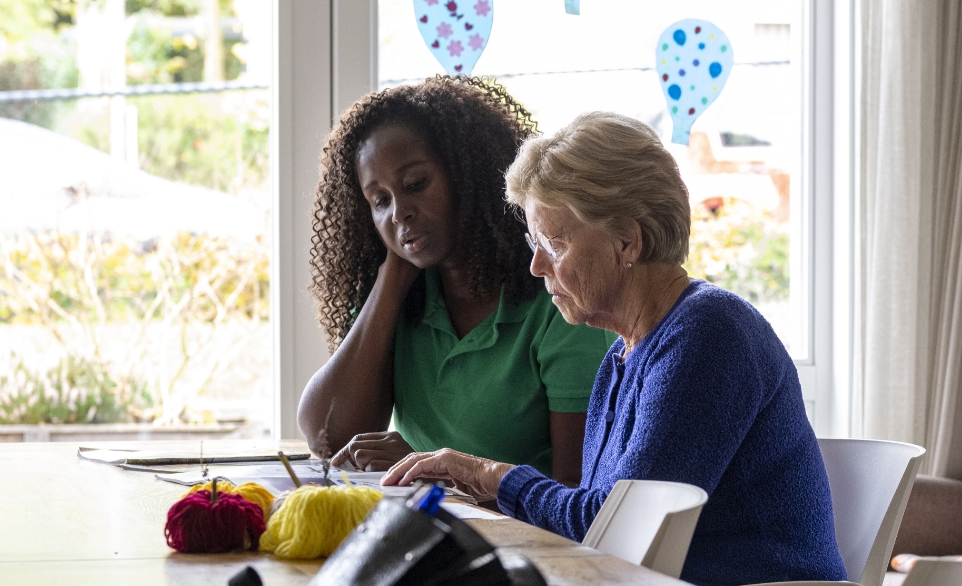
Let’s face it — waste is everywhere in the care sector.
From PPE and paperwork to energy overuse and time-consuming admin, care providers often leave behind a bigger environmental footprint than they realise. And while safety, quality, and compliance always come first, environmental sustainability needs to follow closely behind.
The good news?
Reducing waste doesn’t just help the planet. It helps your profit margins, your efficiency, and your reputation.
In this blog, we’ll explore practical, realistic ways to reduce waste in your care business — and turn that waste into real-world wins.
Why Waste Matters in Care
Waste isn’t just about rubbish in the bin. It’s about resources being used poorly or unnecessarily.
That includes:
- Physical waste– packaging, paper, PPE, cleaning supplies
- Energy waste– electricity, gas, fuel
- Time waste– inefficient processes, duplications, missed opportunities
- Staff waste– underutilised skills, avoidable turnover
- Reputational waste– failing to showcase your green credentials
Every bit of waste is a missed opportunity to improve your operations and lead more responsibly.
Step 1: Conduct a Waste Audit
Before you tackle waste, you need to know where it’s hiding.
What to look at:
- Paperwork: How much are you printing each week?
- PPE usage: Are gloves/aprons being used more than needed?
- Fuel and travel: Are routes optimised?
- Cleaning products: Are you using more than necessary?
- Food waste(if applicable): Are care teams disposing of uneaten meals?
- Staff time: How much admin is still manual or duplicated?
Tip: Involve your team in the audit — they’ll often see waste where leadership can’t.
Step 2: Tackle Packaging and Supply Waste
Your supplies — from PPE to cleaning products — likely arrive with a lot of packaging. Much of it ends up straight in the bin.
What to do:
- Order in bulk to reduce packaging and transport emissions
- Choose suppliers that use minimal or recyclable packaging
- Reuse boxes and containers for storage
- Ask suppliers about eco-certifications or waste-reduction policies
- Store stock properly to avoid damage or expiry
Small change: Label shelves and rotate stock to ensure first-in, first-out usage — it reduces expired or wasted items.
Step 3: Reduce Paper Waste Without Losing Control
The care sector is traditionally paper-heavy — care plans, MAR charts, HR files, policies.
But paper waste is one of the easiest and most cost-effective areas to tackle.
What to do:
- Move assessments, onboarding, and rotas to digital systems
- Share policies, memos, and training materials online
- Use secure digital storage for files and records
- Only print when necessary — and always double-sided
- Train staff on how and when to print responsibly
Bonus: Going paper-lite saves time, reduces storage space, and cuts printing costs by up to 70%.
Step 4: Cut Fuel Waste in Your Rota
If your staff are zig-zagging across town, you’re not just wasting time — you’re wasting fuel, money, and energy.
What to do:
- Group visits by area to reduce mileage
- Use scheduling software to optimise travel
- Encourage car-sharing where appropriate
- Introduce incentives for walking or cycling to local calls
- Begin planning for hybrid or electric vehicles in future budgets
Even a 10% reduction in travel can drastically cut your carbon emissions and vehicle expenses.
Step 5: Be Smarter with PPE and Cleaning Supplies
Infection control is non-negotiable. But that doesn’t mean we can’t be smarter about waste.
What to do:
- Order multi-use items (e.g., reusable aprons or face shields) where safe
- Provide clear training on when and how to use PPE — not just “use more”
- Use refillable cleaning bottles to reduce single-use plastics
- Avoid over-cleaning (yes, it’s a thing — especially in offices!)
Ask your supplier about biodegradable or low-impact alternatives that still meet CQC standards.
Step 6: Stop Wasting Energy
Even small offices can burn through energy unnecessarily.
What to do:
- Switch to LED lighting
- Turn off lights, monitors, and kettles when not in use
- Use smart meters and thermostats to control energy output
- Unplug chargers and appliances at the end of each shift
- Choose energy-efficient appliances as replacements
These tiny tweaks can shrink your bills and your carbon footprint.
Step 7: Streamline Time and Process Waste
Time is a resource — and wasted time can cost more than any physical item.
What to do:
- Automate repetitive admin (e.g., digital timesheets, e-rostering)
- Use templates and pre-written emails for common tasks
- Reduce duplicated work (e.g., writing the same details twice in different systems)
- Hold shorter, more focused team meetings
- Empower staff to flag inefficient processes
Every hour saved is an hour that can go back into care or growth.
Step 8: Repurpose, Donate, or Reuse
Not all waste is rubbish — some of it just needs a second life.
What to do:
- Donate unused uniforms or equipment to charities
- Reuse folders, clipboards, or binders for internal use
- Create “reuse bins” for partially used office supplies
- Offer community donation points (e.g., coat or food drives) as part of your social value work
This isn’t just sustainable — it builds goodwill and community connection too.
Step 9: Involve Your Team — and Celebrate the Wins
Your team are your eyes and ears. If you want to reduce waste meaningfully, you need their ideas and buy-in.
What to do:
- Ask carers where they see waste
- Reward green ideas with small prizes or shoutouts
- Make waste reduction part of team meetings
- Track and share progress:
- “We reduced our printing by 42% this month!”
- “Our PPE usage is down, with zero compromise on safety!”
- Create a “Green Champions” group to lead initiatives
Don’t forget to tell your clients too — show them you’re a provider that cares.
Waste to Wins: At a Glance
| Waste Type | Quick Fix | Win |
| Paper | Go digital where possible | Saves money, time, storage |
| Travel | Optimise routes | Cuts fuel, emissions, delays |
| PPE & Supplies | Order smarter, use better training | Reduces cost and clinical waste |
| Office Energy | LED lights, shut-down policies | Lower bills, lower footprint |
| Staff Time | Automate admin, reduce duplication | Boosts productivity and morale |
| Reusable Materials | Donate and repurpose unused items | Builds social value and trust |
Final Thought: Waste Is Just Untapped Opportunity
Every care provider has waste.
What sets the great ones apart is how they respond to it.
By tackling waste intentionally — and involving your team along the way — you’ll create a business that’s leaner, greener, and more resilient.
And with sustainability playing a bigger role in tendering, client choice, and public trust, turning “waste into wins” could be your greatest competitive edge.
At Care for the Future, we help care providers take small, practical steps to reduce their environmental impact while growing their business and strengthening their brand.
Ready to start reducing waste with purpose? Join the movement at bigsistercare.com/care-for-the-future













